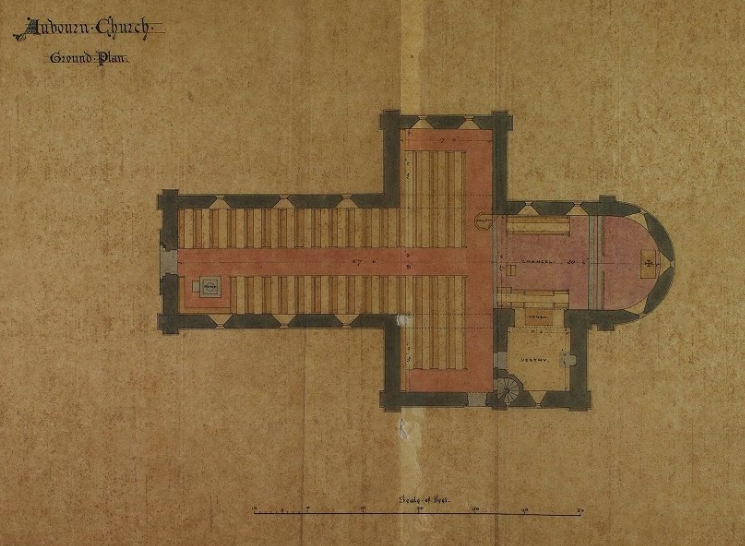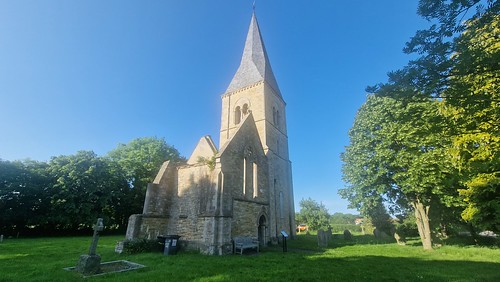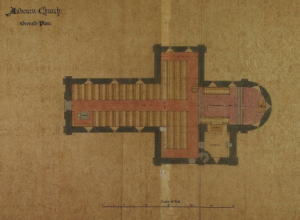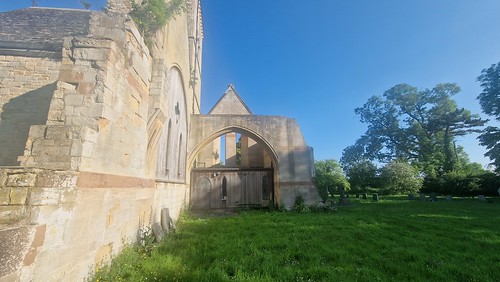Aubourn – Aubourn Clock Tower
They were hopeful times for the Church of England in the Victorian period, congregations were often growing and there was a need for new church buildings to cope with that demand. There was a church in the village of Aubourn, St. Peter’s, but it just wasn’t big enough for the number of people wanting to spend their Sundays deep in prayer.
That increased demand meant a new church was needed, so the old St. Peter’s was mostly demolished and a new one constructed.
The new church was designed by J H Hakewill and constructed between 1862 and 1863 in the Early English style. Unusually, the spire had oak shingles, something which has recently been a problem as it’s not easy to replace and restore them. I’m always intrigued to look back and see what locals thought at the time about changes such as this and in July 1861 an anonymous correspondent wrote to the Stamford Mercury:
“The old church might have been preserved. This is a mistake. The [existing] church now stands in the village near the old Hall, in its time honoured and natural site. The new church will stand out of Aubourn. It was an interesting old church, but neglected. Would it not be wiser to bring the church to the person rather than the person to the church? Mr Editor, the very noblest mission you could have would be to be the conservator of the noble churches within your circulation”.
He wasn’t the only one, another correspondent wrote in the same month:
“We observed that Aubourn church is about perhaps now being pulled down, to build a wall around the new churchyard! Is there nothing about the old church to win the regard of the parish clergyman? Nothing in its Norman tower, its Early English north door, the peculiar construction of the nave, its really handsome chancel, with the monuments of the Nevile family upon its walls?”
There was more excitement about the opening, with the Lincolnshire Chronicle reporting in July 1862:
“The new church of St. Peter at Aubourn was consecrated on Thursday 17 July. The church is Early English, has a nave, north and south transepts and is a very beautiful specimen of modern skill in ecclesiastical architecture. It has been erected at the sole expense of the late Hy. Nevile of Walcot Hall, near Stamford, the leading of the greater part of the materials having been cheerfully and gratuitously done by the tenants and others residing in the parish”.
At least the old church wasn’t entirely demolished, the chancel was kept and that survives today.
But just as congregations had risen in the nineteenth century, they fell away in the twentieth century and this church started to fall into disuse by the 1960s. In 1968, the writing was on the wall and the church became redundant. The Church of England, who had quite a shoddy reputation in this period for looking after their buildings, would have likely wanted the whole thing demolished but the local Archdeacon wanted to save some of it. The local population also weren’t enthusiastic of losing one of the most charming structures in their area, so there was a compromise. Some was knocked down, some was saved.
The building was placed into the care of Aubourn and Haddington Parish Council in 1974 and they’ve been looking after it since. The council have done an excellent job, including ensuring that funding was raised in 2004 to ensure that the structure didn’t fall down.
The clock, which was given as a memorial gift, is the highlight of the whole arrangement now, evident by the name of the structure is the Aubourn Clock. The irony is that the old church, which was mostly demolished for this out of town extravaganza, is now back in use as the parish church. The replacement was too large, in the wrong place and its demise was perhaps inevitable. The remaining parts of this former church have at least been made secure and they are now used by the community. It’s a marvellous way of evolving buildings so that they can remain in use but with a purpose which ensures their survival.







